From the publisher’s website: Between two worlds: the diary of Winifred Coombe Tennant 1909 – 1924 reveals the inner thought of the life of a woman who combined high politics, campaigning and love during a troubled historical period. The diary of Winifred Coombe Tennant (1874-1956) is an extraordinary document. Its daily entries (1909-55) amount to one and a quarter million words. They document the writer’s intense inner life alongside her acute observation of the outside world through a period of unprecedented upheaval. Winifred struggled all her life with a tension between her metaphysical beliefs and the practicalities of changing the social order. She was the most closely studied spiritual medium of her time, and the lover of Gerald Balfour, cabinet minister and brother of the former Prime Minister. Subsequently she became an intimate of Lloyd George and a frequent visitor to 10 Downing Street, where she witnessed momentous events such as the negotiation of the Anglo-Irish Treaty in 1921. She was a suffragist, stood for parliament, and was the first female British delegate to the League of Nations. As a patron of young painters, she became a central figure in the Welsh art world.
New Books and Media
Between Two Worlds: The Diary of Winifred Coombe Tennant 1909-1924, by Peter Lord
Publish Date: May, 2011

Less Incomplete: A Guide to Experiencing the Human Condition beyond the Physical Body, by Sandie Gustus
Publish Date: May, 2011

From the publisher’s website: This, the first book to summarize the work of Brazilian consciousness researcher, Waldo Vieira MD, for a general nonacademic audience, has the backing of some of the world’s most eminent academic and medical researchers of life after death. Based on two new sciences proposed by Vieira, this book provides a comprehensive understanding of the human condition beyond the physical body, offering readers a profound opportunity to increase their self-awareness, self-confidence, balance and maturity, and fulfil their potential. Readers will learn how to - master their energy and use it as a tool to experience conscious and controlled out-of-body experiences, increase their psychic abilities, protect themselves energetically and heal themselves and others; have more positive helpers (spirit guides) and people around them; facilitate the recollection of past lives; identify their purpose in life; become more mature and more (cosmo)ethical and thus improve their karma; be more consistently good-natured; exercise more control over their lives; lose their fear of death; take the maximum opportunity of what this life offers to develop and evolve. . . . be a little less incomplete.
Shamanism and Psi: Imagery Cultivation as an Alternative to the Ganzfeld Protocol, by Lance Storm and Adam J. Rock
Publish Date: May, 2011
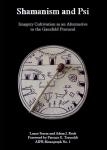
From the publisher’s website: The new book Shamanism and Psi by Dr. Lance Storm and Dr. Adam Rock describes an alternative approach to producing paranormal effects in the laboratory. Many parapsychologists are convinced that popular picture-identification techniques are the best ways to elicit Extra-Sensory Perception (ESP), but the authors have their doubts.
In their innovative monograph, Storm and Rock summarize the major findings and problems involved in several areas of ESP research (i.e., relaxation, dreams, hypnosis, meditation, and ganzfeld), they take issue with the so-called ‘noise-reduction’ model, and they present their Imagery Cultivation Model which is based on shamanic practices. The book also details the successful results of the very first experimental tests of the authors' new Imagery Cultivation Model.
The Afterlife Revealed: What Happens After We Die, by Michael Tymn
Publish Date: May, 2011
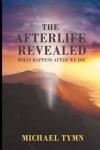
From the publisher’s website: At the very foundation of religious faith and hope is a belief that consciousness will survive death and that we will live on in another dimension of reality. But that foundation easily crumbles when scientific minds are unable to wrap their brains around an afterlife, when they are unable to visualize a non-material world. As the foundation gives way, the philosophy of materialism takes hold and gives rise to moral decadence, egocentricity, hypocrisy, hatred, disorder, flux, strife, chaos, and fear. Such seems to be the state of the world today. There is so much to be found outside the highly guarded boundaries of mainstream science and orthodox religion for those willing to open their minds to it, for those willing to recognize that the dissemination of Truth did not stop with the good books of organized religion and cannot always be found in the laboratory.
Beginning in 1848, a number of sensitive people began developing as mediums, bringing forth communications from the spirit world. One of the skeptics investigating the “popular madness” was Professor Robert Hare of the University of Pennsylvania. Intending to debunk it all, Hare would, after extensive research, become a believer. When he asked an apparently advanced spirit what it was all about, he was told that it was “a deliberate effort, on the part of the inhabitants of the higher spheres, to break through the partition which has interfered with the attainment, by mortals, of a correct idea of their destiny after death.” Unfortunately, both orthodox religion and mainstream science, acting out of ego and fear, have rebuked the efforts of those inhabitants of the higher spheres to enlighten us, thus permitting the foundations of both faith and hope to further crumble.
In The Afterlife Revealed, Michael Tymn sets forth some of the most credible messages from the spirits relative to the nature of their world. Instead of a heaven-hell dichotomy, we are told that there are many levels, or as Jesus is quoted, “many mansions,” and that we cross over to the “other side” based on what might be called a “moral specific gravity.” We discover a Divine plan – one of attainment and attunement, of gradual spiritual growth, of evolution of spirit through progressively higher planes. We see how we are really souls occupying bodies rather than bodies housing souls and how our souls are progressing in finding their way back to Oneness with the Creator through the challenges, the adversities, the trials and tribulations offered us in a particular lifetime.
Investigating the Supernatural: From Spiritism and Occultism to Psychical Research and Metapsychics in France, 1853–1931, by Sofie Lachapelle
Publish Date: April, 2011

From the publisher’s website: Séances were wildly popular in France between 1850 and 1930, when members of the general public and scholars alike turned to the wondrous as a means of understanding and explaining the world. Sofie Lachapelle explores how five distinct groups attempted to use and legitimize séances: spiritists, who tried to create a new "science" concerned with the spiritual realm and the afterlife; occultists, who hoped to connect ancient revelations with contemporary science; physicians, psychiatrists, and psychologists, who developed a pathology of supernatural experiences; psychical researchers, who drew on the unexplained experiences of the public to create a new field of research; and metapsychists, who attempted to develop a new science of yet-to-be understood natural forces.
Lachapelle examines the practices, aims, and level of success of these five disciplines, paying special attention to how they interacted with each other and with the world of mainstream science. Their practitioners regarded mystical phenomena worthy of serious study; most devotees—with notable exceptions of physicians, psychiatrists, and psychologists—also meant to challenge conventional science in general and French science in particular. Through these stories, Lachapelle illuminates the lively relationship between science and the supernatural in late nineteenth- and early twentieth-century France and relates why this relationship ultimately led to the marginalization of psychical research and metapsychics.
An enlightening and entertaining narrative that includes colourful people like "Allan Kardec"—a pseudonymous former mathematics teacher from Lyon who wrote successful works on the science of the séance and what happened after death—Investigating the Supernatural reveals the rich and vibrant diversity of unorthodox beliefs and practices that existed at the borders of the French scientific culture in the late nineteenth and early twentieth centuries.
Sofie Lachapelle is an associate professor of history at the University of Guelph.
The Phoenix Point: The Quest for the Science of the Paranormal, by Geoffrey Crockford and Nigel Hughes
Publish Date: April, 2011
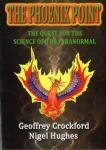
Paranormality: Why We See What Isn't There, by Richard Wiseman
Publish Date: March, 2011

From the publisher’s website: Bestselling psychologist Richard Wiseman unravels the science behind our beliefs in telepathy, clairvoyants, mediums, ghosts, and more...
Professor Richard Wiseman is clear about one thing: paranormal phenomena don't exist. But in the same way that the science of space travel transforms our everyday lives, so research into telepathy, fortune-telling and out-of-body experiences produces remarkable insights into our brains, behaviour and beliefs. Paranormality embarks on a wild ghost chase into this new science of the supernatural and is packed with activities that allow you to experience the impossible. So throw away your crystals, ditch your lucky charms and cancel your subscription to Reincarnation Weekly. It is time to discover the real secrets of the paranormal.
The Lonely Sense: The Autobiography of a Psychic Detective, by Robert Cracknell
Publish Date: March, 2011

From the publisher’s website: THE LONELY SENSE is the unique story of ROBERT CRACKNELL who underwent a harrowing childhood, came to terms with his growing psychic powers, and ended up assisting the police and people around the world with his uncanny ability to see back into the past…and forward into the future.
“Robert Cracknell must be the least typical psychic in the world,” writes COLIN WILSON in his foreword to this electrifying autobiography. “To encounter Cracknell is a refreshing, or possibly a traumatic, experience…He is totally down-to-earth, blunt, aggressive and impatient; he is also intelligent, honest, and obsessively, almost self-destructively, devoted to his own vision of the truth. The fact is that, as a psychic, Cracknell is a total Outsider… the alienated man who has to learn to turn his powers of development inward… Cracknell represents something completely new in this strange field of the paranormal... He has a natural vitality and frankness that makes his book absorbing reading. His is a voice that needs and deserves to be heard.”
This book is an expanded and updated version of Clues to the Unknown originally published by Hamlyn in 1981.
Consciousness and the Source of Reality: The PEAR Odyssey, by Robert Jahn and Brenda Dunne
Publish Date: February, 2011
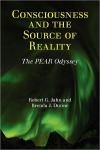
From the publisher’s website: When Robert G. Jahn and Brenda J. Dunne first embarked on their exotic scholarly journey more than three decades ago, their aspirations were little higher than to attempt replication of some previously asserted anomalous results that might conceivably impact future engineering practice, either negatively or positively, and to pursue those ramifications to some appropriate extent.
But as they followed that tortuous research path deeper into its metaphysical forest, it became clear that far more fundamental epistemological issues were at stake, and far stranger phenomenological creatures were on the prowl, than they had originally envisaged, and that a substantially broader range of intellectual and cultural perspectives would be required to pursue that trek productively.
This text is their attempt to record some of the tactics developed, experiences encountered, and understanding acquired on this mist-shrouded exploration, in the hope that their preservation in this format will encourage and enable deeper future scholarly penetrations into the ultimate Source of Reality.
This House is Haunted: The Amazing Inside Story of the Enfield Poltergeist, by Guy Lyon Playfair
Publish Date: February, 2011

From the publisher’s website: On August 31st 1977, normal life ended for Mrs Harper and her four children in their modest council house in a hitherto quiet corner of the north London suburb of Enfield.
Compared to what was to come, the initial phenomena were relatively minor – knockings on the walls, and pieces of furniture moving in ways that did not seem normal. The neighbours came in and searched the house, finding all in order, though they too heard the knocking. The police were called, and were able to witness a chair sliding along the floor. The disturbances went on, getting more intense and more frightening. They were eventually witnessed by at least thirty people.
They included examples of everything a poltergeist can do – overturning chairs and tables, flinging things about, whipping off bedclothes, levitating one of the girls in full view of passers-by, making her speak with the voice of an old man and defying the laws of physics by passing matter through solid matter.
Much of this bewildering and often terrifying activity was captured on tape and film by Maurice Grosse of the Society for Psychical Research and his colleague Guy Lyon Playfair, who were on the case within days of its outbreak stayed on it until it finally came to an end, with a twist as unexpected and surprising as in any detective story.
No other case of its kind has been so well witnessed from start to finish or so thoroughly documented. Incidents are described as they happened, without embellishment, from some six hundred pages of transcripts of live tape recordings. The Enfield poltergeist is already regarded as a classic in the annals of psychical research. It has been the subject of worldwide press coverage and several radio and television documentaries.
GUY LYON PLAYFAIR was born in India and educated in England, obtaining a degree in modern languages from Cambridge University. He then spent many years in Brazil as a freelance journalist for The Economist, Time, and the Associated Press, also working for four years in the press section of the U.S. Agency for International Development (USAID). The first of his twelve books, The Flying Cow, in which he described his experiences investigating the psychic side of Brazil, was translated into six languages and became an international best seller. His most recent book is Telepathy – the Twin Connection. He now lives in London and is a council member of the Society for Psychical Research.
Dreamer: 20 years of psychic dreams and how they changed my life, by Andrew Paquette
Publish Date: January, 2011

From the publisher’s website: Dictionaries say that dreams are a sequence of images from sleep. What is left out is that these images are recollections of something else. They are memories of experiences some fanciful some shatteringly real. When author Andrew Paquette first dreamed of the future he was able to avert a mugging that possibly saved his life. Over the course of the next twenty years he kept meticulous records of his dreams discovering in the process that future dreams are not only possible they are common. Even more importantly because of their quantity he was able to see that his dreams were not just isolated events but remembered snatches of a continuum of existence shared by everyone. In this groundbreaking book he destroys the myths of what dreams are how they are described what they mean and why they are or are not important.
Who Was Mrs Willett? Landscapes and Dynamics of Mind, by Chris Nunn
Publish Date: January, 2011
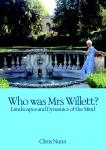
From the publisher’s website: Here is an account of mentality and human experience, written for a multi-disciplinary readership. The focus is on how mind, consciousness and selves inter-relate, extending into exploration of ideas about the nature of awareness and a search for relevant evidence.
‘Consciousness studies’ has reached something of a crossroads nowadays. Computational approaches to mind and ‘quantum consciousness’ theories, have not lived up to early hopes. Neuroscience has made huge strides in the last few years, but is still nowhere near able to account for the existence of consciousness itself - as opposed to being able to explain how some of its content gets there. Philosophically, there is lack of consensus over both the nature of consciousness and what questions we should be asking about it.
Chris Nunn's book surveys the current situation and argues that, as far as ‘mind’ is concerned, we need to take the overall dynamics into consideration, which include genetic, environmental and social factors along with neurology. He emphasizes the close links that exist between memory, experience and personhood. What emerges most strongly from this account is that answers to questions about the nature of consciousness are likely to depend on achieving a better understanding of the physics of time.
Chris Nunn is a psychiatrist who researched mind/body relationships and bipolar disorder. He has been involved in the ‘consciousness studies’ movement since 1992.

